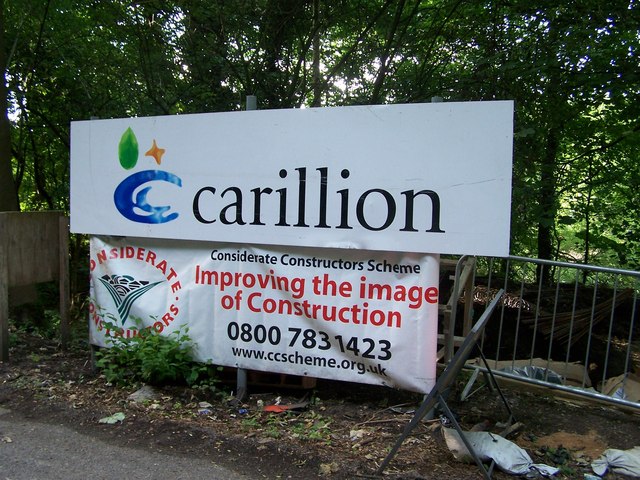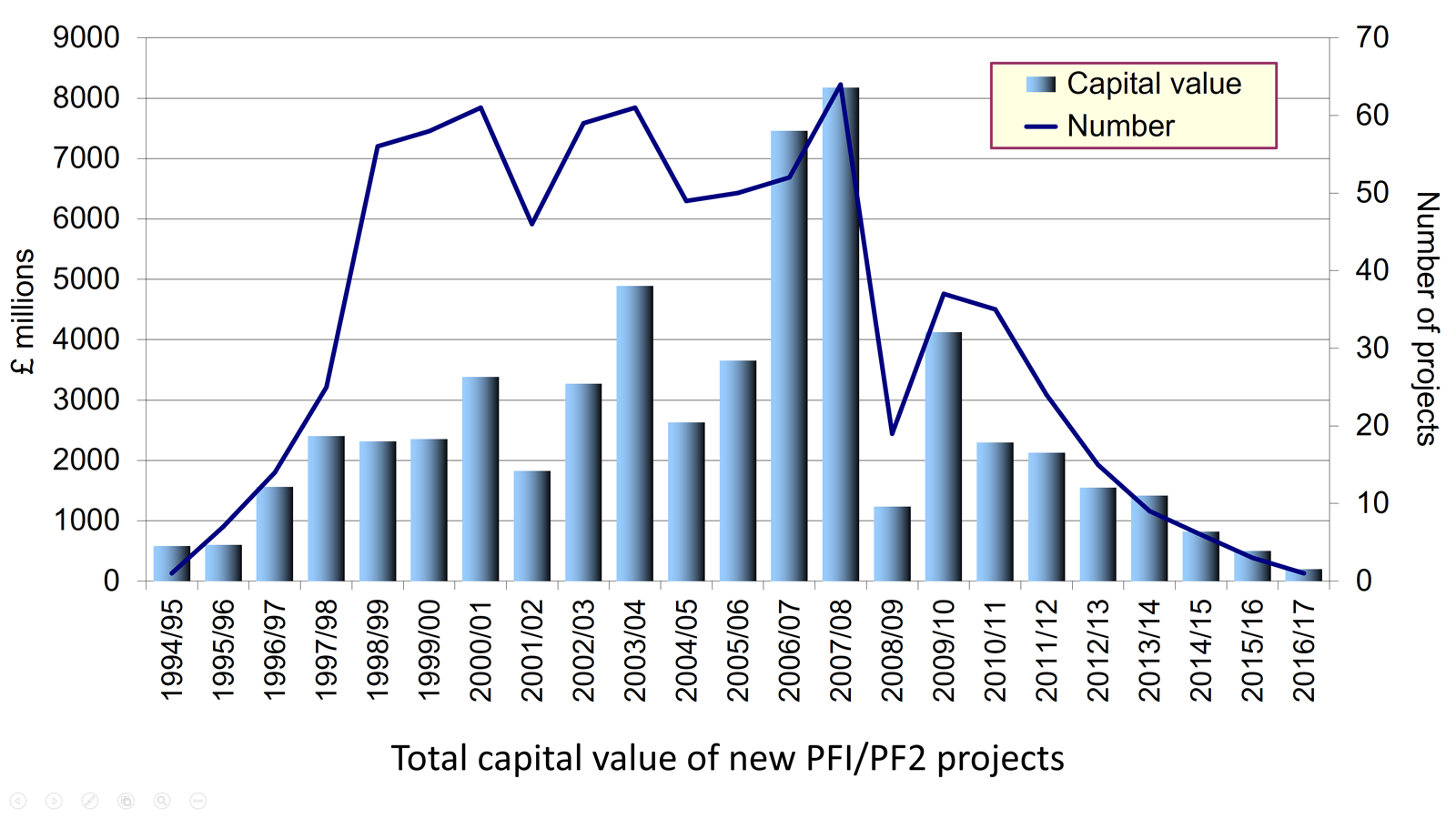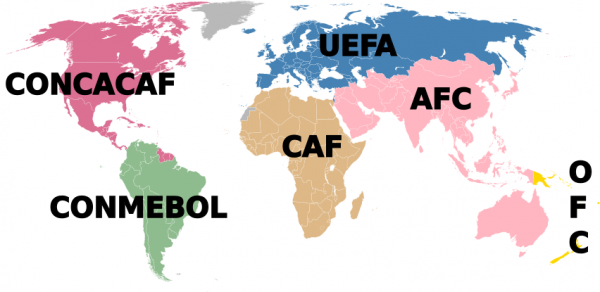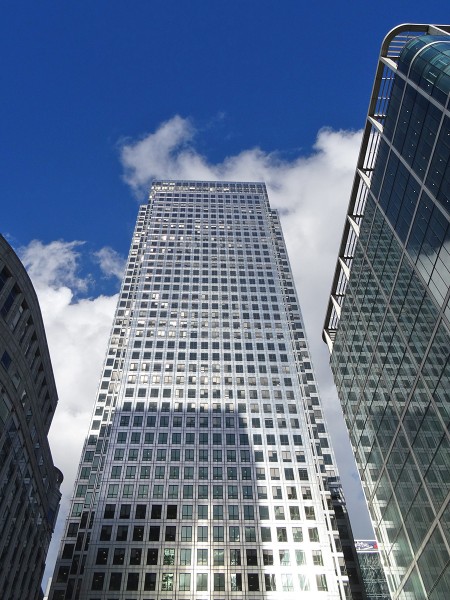 On 15 January 2018, Carillion went into liquidation. It was a major construction, civil engineering and facilities management company in the UK and was involved in a large number of public- and private-sector projects. Many of these were as a partner in a joint venture with other companies.
On 15 January 2018, Carillion went into liquidation. It was a major construction, civil engineering and facilities management company in the UK and was involved in a large number of public- and private-sector projects. Many of these were as a partner in a joint venture with other companies.
It was the second largest supplier of construction and maintenance services to Network Rail, including HS2. It was also involved in the building of hospitals, including the new Royal Liverpool University Hospital and Midland Metropolitan Hospital in Smethwick. It also provided maintenance, cleaning and catering services for many schools, universities, hospitals, prisons, government departments and local authorities. In addition it was involved in many private-sector projects.
Much of the work on the projects awarded to Carillion was then outsourced to other companies, many of which are small construction, maintenance, equipment and service companies. A large number of these may themselves be forced to close as projects cease and many bills remain unpaid.
Many of the public-sector projects in which Carillion was involved were awarded under the Public Finance Initiative (PFI). Under the scheme, the government or local authority decides the service it requires, and then seeks tenders from the private sector for designing, building, financing and running projects to provide these services. The capital costs are borne by the private sector, but then, if the provision of the service is not self-financing, the public sector pays the private firm for providing it. Thus, instead of the public sector being an owner of assets and provider or services, it is merely an enabler, buying services from the private sector. The system is known as a Public Private Partnership.

Clearly, there are immediate benefits to the public finances from using private, rather than public, funds to finance a project. Later, however, there is potentially an extra burden of having to buy the services from the private provider at a price that includes an element for profit. What is hoped is that the costs to the taxpayer of these profits will be more than offset by gains in efficiency.
Critics, however, claim that PFI projects have resulted in poorer quality of provision and that cost control has often been inadequate, resulting in a higher burden for the taxpayer in the long term. What is more, many of the projects have turned out to be highly profitable, suggesting that the terms of the original contracts were too lax.
There was some modification to the PFI process in 2012 with the launching of the government’s modified PFI scheme, dubbed PF2. Most of the changes were relatively minor, but the government would act as a minority public equity co-investor in PF2 projects, with the public sector taking stakes of up to 49 per cent in individual private finance projects and appointing a director to the boards of each project. This, it was hoped, would give the government greater oversight of projects.
With the demise of Carillion, there has been considerable debate over outsourcing by the government to the private sector and of PFI in particular. Is PFI the best model for funding public-sector investment and the running of services in the public sector?

On 18 January 2018, the National Audit Office published an assessment of PFI and PF2. The report stated that there are currently 716 PFI and PF2 projects either under construction or in operation, with a total capital value of £59.4 billion. In recent years, however, ‘the government’s use of the PFI and PF2 models has slowed significantly, reducing from, on average, 55 deals each year in the five years to 2007-08 to only one in 2016-17.’
Should the government have closer oversight of private providers? The government has been criticised for not heeding profit warnings by Carillion and continuing to award it contracts.
Should the whole system of outsourcing and PFI be rethought? Should more construction and services be brought ‘in-house’ and directly provided by the public-sector organisation, or at least managed directly by it with a direct relationship with private-sector providers? The articles below consider these issues.
Articles
Carillion collapse: How can one of the Government’s biggest contractors go bust? Independent, Ben Chu (15/1/18)
The main unanswered questions raised by Carillion’s collapse The Telegraph, Jon Yeomans (15/1/18)
Carillion taskforce to help small firms hit by outsourcer’s collapse The Telegraph, Rhiannon Curry (18/1/18)
Carillion Q&A: The consequences of collapse and what the government should do next The Conversation, John Colley (17/1/18)
UK finance watchdog exposes lost PFI billions Financial Times, Henry Mance and George Parker (17/1/18)
PFI not ‘fit for purpose’, says UK provider Financial Times, Gill Plimmer and Jonathan Ford (6/11/17)
Revealed: The £200bn Cost Of ‘Wasteful’ PFI Contracts Huffington Post, George Bowden (18/1/18)
U.K. Spends $14 Billion Per Year on Carillion-Style Projects Bloomberg, Alex Morales (18/1/18)
Carillion may have gone bust, but outsourcing is a powerful public good The Guardian, John McTernan (17/1/18)
PFI deals ‘costing taxpayers billions’ BBC News (18/1/18)
Taxpayers will need to pay £200bn PFI bill, says Watchdog ITV News (18/1/18)
The PFI bosses fleeced us all. Now watch them walk away The Guardian, George Monbiot (16/1/18)
Carillion’s collapse shows that we need an urgent review of outsourcing The Guardian, David Walker (16/1/18)
Carillion collapse: What next for public services? LocalGov, Jos Creese (16/1/18)
Taxpayers to foot £200bn bill for PFI contracts – audit office The Guardian, Rajeev Syal (18/1/18)
Official publications
A new approach to public private partnerships HM Treasury (December 2012)
Private Finance Initiative and Private Finance 2 projects: 2016 summary data GOV.UK
PFI and PF2 National Audit Office (18/1/18)
Questions
- Why did Carillion go into liquidation? Could this have been foreseen?
- Identify the projects in which Carillion has been involved.
- What has the government proposed to deal with the problems created by Carillion’s liquidation?
- What are the advantages and disadvantages of the Private Finance Initiative?
- Why have the number and value of new PFI projects declined significantly in recent years?
- How might PFI projects be tightened up so as to retain the benefits and minimise the disadvantages of the system?
- Why have PFI cost reductions proved difficult to achieve? (See paragraphs 2.7 to 2.17 in the National Audit Office report.)
- How would you assess whether PFI deals represent value for money?
- What are the arguments for and against public-sector organisations providing services, such as cleaning and catering, directly themselves rather than outsourcing them to private-sector companies?
- Does outsourcing reduce risks for the public-sector organisation involved?
 Cloud computing is growing rapidly and has started to dominate many parts of the IT market. Cloud revenues are rising at around 25% per year and, according to Jeremy Duke of Synergy Research Group:
Cloud computing is growing rapidly and has started to dominate many parts of the IT market. Cloud revenues are rising at around 25% per year and, according to Jeremy Duke of Synergy Research Group:
“Major barriers to cloud adoption are now almost a thing of the past, especially on the public-cloud side. Cloud technologies are now generating massive revenues for technology vendors and cloud service providers, and yet there are still many years of strong growth ahead.”
The market leader in cloud services (as opposed to cloud hardware) is Amazon Web Services (AWS), a subsidiary of Amazon. At the end of 2016, it had a market share of around 40%, larger than the next three competitors (Microsoft, Google and IBM), combined. AWS originated cloud computing some 10 years ago. It is set to have generated revenue of $13 billion in 2016.
The cloud computing services market is an oligopoly, with a significant market leader, AWS. But is the competition from other players in the market, including IT giants, such as Google, Microsoft, IBM and Oracle, enough to guarantee that the market stays competitive and that prices will fall as technology improves and costs fall?
Certainly all the major players are investing heavily in new services, better infrastructure and marketing. And they are already established suppliers in other sectors of the IT market. Microsoft and Google, in particular, are strong contenders to AWS. Nevertheless, as the first article states:
Neither Google nor Microsoft have an easy task since AWS will continue to be an innovation machine with a widely recognized brand among the all-important developer community. Both Amazon’s major competitors have an opportunity to solidify themselves as strong alternatives in what is turning into a public cloud oligopoly.
Articles
While Amazon dominates cloud infrastructure, an oligopoly is emerging. Which will buyers bet on? diginomica, Kurt Marko (16/2/17)
Study: AWS has 45% share of public cloud infrastructure market — more than Microsoft, Google, IBM combined GeekWire, Dan Richman (31/10/16)
Cloud computing revenues jumped 25% in 2016, with strong growth ahead, researcher says GeekWire, Dan Richman (4/1/17)
Data
Press releases Synergy Research Group
Questions
- Distinguish the different segments of the cloud computing market.
- What competitive advantages does AWS have over its major rivals?
- What specific advantages does Microsoft have in the cloud computing market?
- Is the amount of competition in the cloud computing market enough to prevent the firms from charging excessive prices to their customers? How might you assess what is ‘excessive’?
- What barriers to entry are there in the cloud computing market? Should they be a worry for competition authorities?
- Are the any network economies in cloud computing? What might they be?
- Cloud computing is a rapidly developing industry (for example, the relatively recent development of cloud containers). How does the speed of development impact on competition?
- How would market saturation affect competition and the behaviour of the major players?
 Earlier this week FIFA, the world governing body of football, announced plans to expand the World Cup from 32 to 48 teams starting in 2026. It is fair to say that this has been met with mixed reactions, in part due to the politics and money involved. However, for an economist one particularly interesting question is how the change will affect the incentives of the teams taking part in the competition.
Earlier this week FIFA, the world governing body of football, announced plans to expand the World Cup from 32 to 48 teams starting in 2026. It is fair to say that this has been met with mixed reactions, in part due to the politics and money involved. However, for an economist one particularly interesting question is how the change will affect the incentives of the teams taking part in the competition.
As a result of the change in the first stage of the competition, teams will be play the two other teams in their group. The best two teams in the group will then progress to the next round with the worst team going home. This is in contrast to the current format where the best two teams from a group of four go through to the next round.
Currently, in the final round of group matches all four of the teams in the group play simultaneously. However, an immediate implication of the new format is that this will no longer be the case. Instead, one of the teams will have finished their group matches before the other two teams play each other. This could have important implications for the incentives of the teams involved. To see this we can recall a very famous match played under similar circumstances between West Germany and Austria at the 1982 World Cup.
 The results of the earlier group games meant that if West Germany beat Austria by one or two goals to nil both teams would progress to the next round. Any other result would mean that Algeria progressed at the expense of one of these two teams. The way in which the match played out was that West Germany scored early on and much of the rest of the game descended into farce. Both teams refused to attack or tackle their opponents, as they had no incentive to so (see here for some clips of the action, or lack of!).
The results of the earlier group games meant that if West Germany beat Austria by one or two goals to nil both teams would progress to the next round. Any other result would mean that Algeria progressed at the expense of one of these two teams. The way in which the match played out was that West Germany scored early on and much of the rest of the game descended into farce. Both teams refused to attack or tackle their opponents, as they had no incentive to so (see here for some clips of the action, or lack of!).
There is no evidence to suggest that West Germany and Austria had come to a formal agreement to do this. Instead, the two teams appear to have simply had a mutual understanding that refraining from competing would be beneficial for both of them.
This is exactly what economists refer to as tacit collusion – a mutual understanding that refraining from competition and keeping prices high benefits all firms in the market. Much like the fans who had to sit through the farce of a game (you can hear the frustration of the crowd in the video clip linked to above), the end result is harm to consumers who have to pay the higher prices or go without the product.
For this reason governments use competition policy to try to stop situations arising in markets that make the possibility of tacit collusion more likely. One way in which this is done is by preventing mergers in markets where tacit collusion appears possible and would be facilitated by the reduction in the number of firms as a result of the merger. The equivalent for the World Cup would be preventing a change in the format of the competition.
An alternative approach is to tinker with the rules of the game in order to make collusion harder. FIFA seems to have some awareness of the possibility of doing this as it is suggesting that it may require all tied games to extra-time and then a penalty shoot-out in order to determine a winner. Clearly, this would go at least some way to alleviating concerns about tacit collusion in the final group matches because coordinating on a draw would no longer be possible. In a similar fashion, competition authorities can also intervene in markets to change the rules of the game (see for example the recent intervention in the UK cement industry).
Therefore, more generally, the World Cup example highlights the fact that variations in the structure of markets and the rules of the game can have significant effects on firms’ incentives and this can have important consequences for market outcomes. It will certainly be fascinating to see what rules are imposed for the 2026 World Cup and how the teams taking part respond.
Articles
World Cup: Fifa to expand competition to 48 teams after vote BBC News (10/1/17)
How will a 48-team World Cup work? Fifa’s plan for 2026 explained The Guardian, Paul MacInnes (10/1/17)
The Disgrace of Gijón and the 48-team FIFA World Cup Mike or the Don (12/1/17)
Questions
- What is the difference between tacit collusion and a cartel?
- Why does a reduction in the number of firms in a market make collusion easier?
- What other factors make collusion more likely?
- How does competition policy try to prevent the different forms of collusion?
 This time last year bookmakers Ladbrokes and Coral announced their intention to merge. This was closely followed by a merger between Betfair and Paddy Power. This wave of consolidation appears to have been partly motivated by the rise of online gambling, stricter regulation and increased taxation.
This time last year bookmakers Ladbrokes and Coral announced their intention to merge. This was closely followed by a merger between Betfair and Paddy Power. This wave of consolidation appears to have been partly motivated by the rise of online gambling, stricter regulation and increased taxation.
The UK Competition and Markets Authority (CMA) commenced an initial investigation into the Ladbrokes-Coral merger in late 2015 and, at the request of the merging parties, agreed to fast track the case to a detailed phase 2 investigation.
Despite the growth in the online market, the CMA’s investigation recognised the continued importance of high-street betting shops:
Although online betting has grown substantially in recent years, the evidence we’ve seen confirms that a significant proportion of customers still choose to bet in shops – and many will continue to do so after the merger.
The CMA identified almost 650 local markets where it believed there would be a substantial lessening of competition. It concluded that this could have both local and national effects:
Discounts and offers of free bets to individual customers are 2 of the ways betting shops respond to local competition which could be threatened by the merger. Such a widespread reduction in competition at the local level could also worsen those elements that are set centrally, such as odds and betting limits.
Therefore, earlier this week the CMA announced that before it is prepared to clear the merger, the parties must sell around 350 stores in order to preserve competition in the problem markets (many of these overlap so the number of store sales required is less than the number of problem markets). This divestment represents around 10% of the total number of stores currently owned by the two merging parties. It appears that rivals Betfred and Boylesports, plus a number of private equity investors, are already interested in purchasing the stores.
This may also not be the last consolidation in the industry with the struggling leading bookmaker William Hill apparently attracting merger interest from rival 888 in combination with a casino and bingo hall operator.
Articles
BHA warns CMA over Coral-Ladbrokes merger Racing Post, Bill Barber (7/7/16)
Ladbrokes-Gala Coral must sell 350-400 shops to clear merger BBC, (26/7/16)
William Hill is lukewarm on ambitious three-way merger deal The Telegraph, Ben Martin (25/7/16)
Questions
- Why might the merging parties in this case have been so keen to fast track the case to phase 2?
- What are the key factors in defining the market in this case? How do you think these would have affected the decision?
- Are there arguments that wider social issues in addition to the effect on competition should be taken into account when considering mergers in this market?
- Which of the potential purchasers of the divested stores do you think might be best for competition?
- How do you think this market will evolve in the future?
 Short-termism is a problem which has dogged British firms and is part of the explanation of low investment in the UK. Shareholders, many of which are large pension funds and other financial institutions, are more concerned with short-term returns than long-term growth and productivity. Likewise, senior managers’ rewards are often linked to short-term performance rather than the long-term health of the company.
Short-termism is a problem which has dogged British firms and is part of the explanation of low investment in the UK. Shareholders, many of which are large pension funds and other financial institutions, are more concerned with short-term returns than long-term growth and productivity. Likewise, senior managers’ rewards are often linked to short-term performance rather than the long-term health of the company.
But the stakeholders in companies extend well beyond owners and senior managers. Workers, consumers, suppliers, local residents and the country as a whole are all stakeholders in companies.
So is the current model of capitalism fit for purpose? According to the new May government, workers and consumers should be represented on the boards of major British companies. The Personnel Today article quotes Theresa May as saying:
‘The people who run big businesses are supposed to be accountable to outsiders, to non-executive directors, who are supposed to ask the difficult questions.  In practice, they are drawn from the same, narrow social and professional circles as the executive team and – as we have seen time and time again – the scrutiny they provide is just not good enough.
In practice, they are drawn from the same, narrow social and professional circles as the executive team and – as we have seen time and time again – the scrutiny they provide is just not good enough.
We’re going to change that system – and we’re going to have not just consumers represented on company boards, but workers as well.’
This model is not new. Many countries, such as France and Germany, have had worker representatives on boards for many years. There the focus is often less on short-term profit maximisation and more on the long-term performance of the company in terms of a range of indicators.
Extending this model to stakeholder groups more generally could see companies taking broader social objectives into account. And the number of companies which put corporate social responsibility high on their agenda could increase significantly.
And this approach can ultimately bring better returns to shareholders. As the first The Conversation article below states:
This is something that research into a ‘Relational Company’ model has found – by putting the interests of all stakeholders at the heart of their decision making, companies can become more competitive, stable and successful. Ultimately, this will generate greater returns for shareholders.
While CSR has become mainstream in terms of the public face of some large corporations, it has tended to be one of the first things to be cut when economic growth weakens. The findings from Business in the Community’s 2016 Corporate Responsibility Index suggest that many firms are considering how corporate responsibility can positively affect profits.  However, it remains the case that there are still many firms and consumers that care relatively little about the social or natural environment. Indeed, each year, fewer companies take part in the CR Index. In 2016 there were 43 firms; in 2015, 68 firms; in 2014, 97 firms; in 2013, 126 firms.
However, it remains the case that there are still many firms and consumers that care relatively little about the social or natural environment. Indeed, each year, fewer companies take part in the CR Index. In 2016 there were 43 firms; in 2015, 68 firms; in 2014, 97 firms; in 2013, 126 firms.
In addition to promising to give greater voice to stakeholder groups, Mrs May has also said that she intends to curb executive pay. Shareholders will be given binding powers to block executive remuneration packages. But whether shareholders are best placed to do this questionable. If shareholders’ interests are the short-term returns on their investment, then they may well approve of linking executive remuneration to short-term returns rather than on the long-term health of the company or its role in society more generally.
When leaders come to power, they often make promises that are never fulfilled. Time will tell whether the new government will make radical changes to capitalism in the UK or whether a move to greater stakeholder power will remain merely an aspiration.
Articles
Will Theresa May break from Thatcherism and transform business? The Conversation, Arad Reisberg (19/7/16)
Democratise companies to rein in excessive banker bonuses The Conversation, Prem Sikka (14/3/16)
Theresa May promises worker representatives on boards Personnel Today, Rob Moss (11/7/16)
If Theresa May is serious about inequality she’ll ditch Osbornomics The Guardian, Mariana Mazzucato and Michael Jacobs (19/7/16)
Theresa May should beware of imitating the German model Financial Times, Ursula Weidenfeld (12/7/16)
Questions
- To what extent is the pursuit of maximum short-term profits in the interests of (a) shareholders; (b) consumers; (c) workers; (d) suppliers; (e) society generally; (f) the environment?
- How could British industry be restructured so as to encourage a greater proportion of GDP being devoted to investment?
- How would greater flexibility in labour markets affect the perspectives on company performance of worker representatives on boards?
- How does worker representation in capitalism work in Germany? What are the advantages and disadvantages of this model? (See the panel in the Personnel Today article and the Financial Times article.)
- What do you understand by ‘industrial policy’? How can it be used to increase investment, productivity, growth and the pursuit of broader stakeholder interests?
 On 15 January 2018, Carillion went into liquidation. It was a major construction, civil engineering and facilities management company in the UK and was involved in a large number of public- and private-sector projects. Many of these were as a partner in a joint venture with other companies.
On 15 January 2018, Carillion went into liquidation. It was a major construction, civil engineering and facilities management company in the UK and was involved in a large number of public- and private-sector projects. Many of these were as a partner in a joint venture with other companies.







